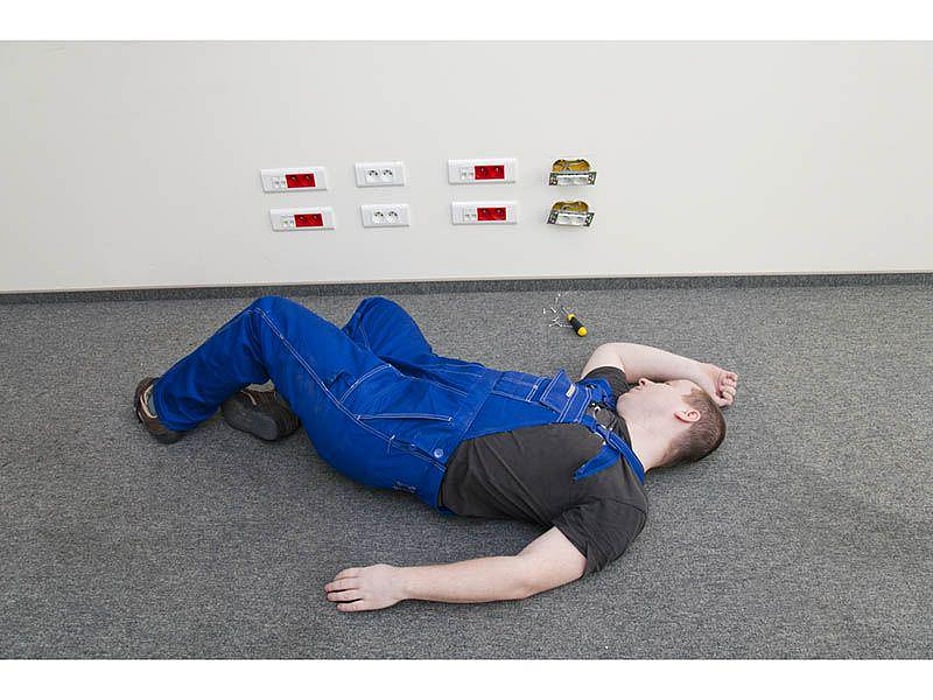Electric Shock and Burns

From the coffeemaker to the fax machine, devices that run on electricity are all around us. Most of the time, we don't worry about the live current that makes them work. But every year, 1,000 people die because of electrical accidents. Anything from touching a downed power line to plugging in a faulty string of Christmas lights can cause serious burns on the skin and damage muscles, nerves, and internal organs.
Young children often suffer burns in their mouths from chewing on an electrical cord or playing with an outlet. Knowing what to do in the event of such an accident can limit the extent of the burn and possibly save a life.
What to do
Don't touch anything until you've assessed the situation. If the victim is still in contact with the electrical source, touching him or her could expose you to life-threatening danger. If possible, turn off the source of electricity. Unplug the appliance or turn off the building's main power. Don't depend on the appliance's switch, which could be faulty.
If you are unable to turn off the electricity, you need to quickly -- and carefully -- separate the victim from the source of the current. Stand on a pile of clothes or newspapers, a rubber mat, a book, or other insulating material. Using a broomstick, plastic mop handle, wooden chair, rope or other nonconducting object, separate the victim from the source of electricity (Nonconducting objects can be anything made of cardboard, plastic, or wood; a wooden baseball bat or a branch will serve the purpose.) Be careful to keep these materials dry. Do NOT touch the victim with your hands or with anything that is wet or made of metal.
One caution: If you determine that the victim is still in contact with a high-voltage current from a downed power line, don't try to touch him at all. Stay at least 20 feet away and call 911. Tell the 911 operator to contact the power company to have the electricity turned off immediately. Do not approach or touch the victim until you are sure the power has been turned off. Once you are certain the current has stopped, begin first aid for electric shock immediately.
How to perform first aid
Assess the victim's condition and check for breathing. If breathing has stopped, call 911 and begin CPR immediately. If the person is breathing but unconscious, check for burns. These may be present at both the entry and exit sites of the electric current, so check the entire body. Cover burns with sterile gauze bandages, if available, or a clean cloth. Don't put heavy blankets or towels on the burns, because their weight could cause pain. Treat minor burns as you would any kind of burn. If the wound is serious, however, don't try to cool the burn or apply ointment or oil to it.
A person with an electrical burn should get immediate medical attention, even if the skin doesn't seem injured or if the wound does not appear deep. Electrical burns often cause serious injury inside the body that may not be apparent on the skin. If you have any doubts, call 911, even if the victim is conscious and says she feels okay. Electrical burns are often deeper and more serious than they appear.
While you're waiting for help, check to see if the victim is faint or shows signs of shock, including pale or clammy skin and a rapid pulse. If this is the case, elevate her legs slightly, cover them with a light blanket, and wait for help.
Special situations
If someone is struck by lightning, call 911 or take the victim to an emergency facility immediately. If the person isn't breathing, begin first aid, including cardiopulmonary resuscitation (CPR). You can touch a lightning victim immediately. His or her body will not conduct electricity.
References
American Medical Association. Handbook of First Aid and Emergency Care.
American College of Emergency Physicians. First Aid Manual.
The American Red Cross First Aid & Safety Handbook.
Centers for Disease Control and Prevention. National Ag Safety Database.
MayoClinic.com. http://www.mayoclinic.com/findinformation/firstaidandselfcare/index.cfm
Electrical injury. Medline. http://www.nlm.nih.gov/medlineplus/ency/article/000053.htm
Burns: Taking care of burns. American Academy of Family Physicians
Related Posts
Inflammatory-Nutritional Score Helps Predict Survival in New Multiple Myeloma
FRIDAY, Jan. 20, 2023 (HealthDay News) -- For patients with newly diagnosed...
Copy of Health Highlights: Oct. 8, 2021
More than half of Americans surveyed may not get flu shot. With last year's flu...
Pandemic Especially Tough on Kids With ADHD
TUESDAY, Jan. 25, 2022 (HealthDay News) -- Living through the pandemic has not...
Indigenous Children Continue to Experience High Rates of RSV
FRIDAY, July 14, 2023 (HealthDay News) -- American Indian/Alaska Native (AI/AN)...
